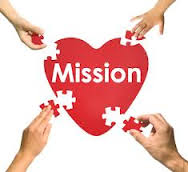Non-profit blogging: What’s In It For Me?
By Rose Reinert
Guest blogger
 Last Monday, we explored chapter 5 of Lon Safko’s book “The Social Media Bible” and talked about how online forums might be helpful to your non-profit organization’s fundraising program. This week, we explore chapter 6 where Safko unpacks the history and power of blogs.
Last Monday, we explored chapter 5 of Lon Safko’s book “The Social Media Bible” and talked about how online forums might be helpful to your non-profit organization’s fundraising program. This week, we explore chapter 6 where Safko unpacks the history and power of blogs.
A little history
As we discovered last week, online forums or communities became public in the 1990’s. Using various online communities, people posted to bulletin board systems and forums. People started posting online diaries or journals that documented their personal activities to these sites, and they often included pictures and video. In the late 90’s and early 2000’s, blogging began to move from personal diaries to include other topics.
If you are reading this- you can check “reading a blog” off your bucket list!
The very first guest blog that I posted on the DonorDreams platform addressed the key issue that all readers address every time they open an email, visit a website or visit a blog. Of course, it is the question of “What’s in it for me?” (aka WIIFM). What’s cool about today’s post is that we’re going to discuss WIIFM with regards to both reading a blog and writing a blog.
WIIFM? – Reading Blogs
We all know there is only so much time in the day, and while we work to fulfill our day-to-day job duties, it remains challenging to also fit in personal development and staying up-to-date on industry trends. Who has time for trainings and conferences?
There is an easier way!
I recommend hitting the web and taking a look at some blogs that speak to your profession.
Select a few that you can remain committed to reading. Subscribe to those blogs, and content will be delivered to your email inbox as frequently as the blogger publishes. Some bloggers write a monthly post, others do it weekly, and some (like our friend Erik Anderson at DonorDreams blog, try to post something every day).
My suggestion is to set aside about ten minutes into your schedule at the beginning of your day when you’re powering up your computer. Dedicate those 10 minutes to your professional development by reading a blog or two that you’ve subscribe to and speaks to your professional interests.
If you are not sure where to start you can ask colleagues about some of their favorites. Here is a short list of blogs that I suggest you check out:
For more suggestions, please check out the Blogroll section of the DonorDreams blog. If you have suggestions of other blogs to add to blogroll, please use the comment box to share your suggestion and Erik will add them to our online community. (Isn’t he always saying something like: “We can all learn from each other?”)
 WIIFM?—Writing a Blog
WIIFM?—Writing a Blog
This is the first time that I have ever blogged. I did one or two guest spots here on the DonorDreams blog platform, but this is the first ongoing guest spot that I have had.
The first several times that I sat down to write- I ended up:
- stopping and doing the dishes
- making a phone call to my mom
- writing a little . . . erasing it
- playing a game with my kids
- finally pushing through to finish
Much like anything, with practice, it becomes less intimidating and each time I sharpened that skill a little more.
Any time you enhance communication with your donors or supporters, you continue to build trust. Depending on how you structure your blog contents, a blog can:
- engage donors
- keep them updated on news
- align your organization with national trends or initiatives
- demonstrate how your organization is working to meet needs and solve problems.
If your agency is striving to become a donor-centered organization, your blog content should be focused on:
- appreciating and expressing gratitude to donors
- showing donors that you are using their investments how you said you would during the solicitation visit
- illustrating the impact that contributions are having on the lives of your clients and throughout the community
Blogging is a great way to show relevance within your industry. I believe that anytime you can differentiate your organization as an expert in a certain area, you build trust and accountability.
Are you thinking about starting a blog? If so, don’t just jump in and start blogging this afternoon. Ensure you are committed to the time it takes. Make sure your dedication to consistently blogging is a sustainable commitment. The worst thing to do is start with a bang and fizzle out.
So, now it’s your turn. I would love to hear more about your experience blogging. If you don’t blog, then please tell us the comment box to tell me about your favorite blogs.
Does your organization currently use blogging? If so, who is the target audience? Share your ideas for blogging for your organization. Do you think blogging is worth your investment of time?

 Working with organizations in New Mexico and West Texas means lots of windshield time, and last week I found myself contemplating the question: “What is the biggest cardinal sin a non-profit executive director can commit?” In the final analysis, my conclusion surprised me, which means it was destined to end up here on the DonorDreams blog for you to chew on and contemplate.
Working with organizations in New Mexico and West Texas means lots of windshield time, and last week I found myself contemplating the question: “What is the biggest cardinal sin a non-profit executive director can commit?” In the final analysis, my conclusion surprised me, which means it was destined to end up here on the DonorDreams blog for you to chew on and contemplate.

 I just loved their Facebook page that was filled with various images. What I loved was how they branded each message with their colors and their logo.
I just loved their Facebook page that was filled with various images. What I loved was how they branded each message with their colors and their logo. This group really understands how images can impact and catch the viewer’s eye. With every post on Facebook, St. Jude Children’s Research Hospital included an image.
This group really understands how images can impact and catch the viewer’s eye. With every post on Facebook, St. Jude Children’s Research Hospital included an image. Of course, when I looked at WWF’s Face book page I expected to see tons of pictures of animals. I was surprised, however, to see even more.
Of course, when I looked at WWF’s Face book page I expected to see tons of pictures of animals. I was surprised, however, to see even more.
 A CEO who had begun to practice his own form of “management-by-walking-around” learned from his employees that the company inhibited innovation by subjecting every new idea to more than 275 separate checks and sign-offs. He promptly appointed a task force to look at this situation, and it eliminated 200 of the obstacles. The result was a higher innovation rate.
A CEO who had begun to practice his own form of “management-by-walking-around” learned from his employees that the company inhibited innovation by subjecting every new idea to more than 275 separate checks and sign-offs. He promptly appointed a task force to look at this situation, and it eliminated 200 of the obstacles. The result was a higher innovation rate. Phenomenal!: “What assumptions am I making and what biases do I hold that are manifesting themselves in the culture of this organization, leading to an approval process with 275 signoffs and associates that are reticent to challenge that process?
Phenomenal!: “What assumptions am I making and what biases do I hold that are manifesting themselves in the culture of this organization, leading to an approval process with 275 signoffs and associates that are reticent to challenge that process?
 I can’t prove it, but I suspect that executive directors for non-profit organizations are the most under-appreciated bunch of people on the planet. Working for a group of people (e.g. board of directors) compared to one person is difficult, and I think this contributes to my observations pertaining to appreciation. Simply stated I think group dynamics are such that every person thinks someone else is doing the appreciating and recognizing.
I can’t prove it, but I suspect that executive directors for non-profit organizations are the most under-appreciated bunch of people on the planet. Working for a group of people (e.g. board of directors) compared to one person is difficult, and I think this contributes to my observations pertaining to appreciation. Simply stated I think group dynamics are such that every person thinks someone else is doing the appreciating and recognizing. I cannot tell you the number of people over the course of my 20 years in non-profits that either congratulated me for running my non-profit like a business and went on to tell me non-profits should be run like a business. I never knew what to say. Thank you?
I cannot tell you the number of people over the course of my 20 years in non-profits that either congratulated me for running my non-profit like a business and went on to tell me non-profits should be run like a business. I never knew what to say. Thank you? Non-profits have to manage the budget AND meet the mission.
Non-profits have to manage the budget AND meet the mission. Non-profits are not run by one person for a reason. The Board represents the community as the owners of the organization. The organization exists to meet a need. Businesses, which also address needs, exist to make money.
Non-profits are not run by one person for a reason. The Board represents the community as the owners of the organization. The organization exists to meet a need. Businesses, which also address needs, exist to make money.
 Safko recommends getting started by visiting some wikis.
Safko recommends getting started by visiting some wikis. Two men were walking through the woods when a large bear walked out into the clearing no more than 50 feet in front of them.
Two men were walking through the woods when a large bear walked out into the clearing no more than 50 feet in front of them. Ha!
Ha! But here’s something we can predict: embedded in these cultures we will find organizational policies and/or management practices that pit one associate against another … we will find policies and/or practices that recognize and reward individual achievement without also recognizing and rewarding teamwork and team results … and we will find organizational initiatives that at best only temporarily solves problems (because they only address symptoms) without real and substantial effort and action to fundamentally address the root causes of problems.
But here’s something we can predict: embedded in these cultures we will find organizational policies and/or management practices that pit one associate against another … we will find policies and/or practices that recognize and reward individual achievement without also recognizing and rewarding teamwork and team results … and we will find organizational initiatives that at best only temporarily solves problems (because they only address symptoms) without real and substantial effort and action to fundamentally address the root causes of problems. Good morning everyone! Yesterday was New Years Day and I spent the first day of 2014 in a car trying to make it half way back to the Dallas-Fort Worth metroplex. As many of you know, I am still working on a contract temporarily providing technical assistance and organizational services to 20 organizations in New Mexico and West Texas.
Good morning everyone! Yesterday was New Years Day and I spent the first day of 2014 in a car trying to make it half way back to the Dallas-Fort Worth metroplex. As many of you know, I am still working on a contract temporarily providing technical assistance and organizational services to 20 organizations in New Mexico and West Texas. Let me first address the question of whether or not resolutions are meaningful.
Let me first address the question of whether or not resolutions are meaningful. When I opened my non-profit consulting practice 2.5 years ago —
When I opened my non-profit consulting practice 2.5 years ago —  One of the features on my company’s website offers viewers the opportunity to subscribe to a free monthly eNewsletter.
One of the features on my company’s website offers viewers the opportunity to subscribe to a free monthly eNewsletter. It happened again yesterday. A non-profit friend of mine called and we talked for an hour about their revenue model and fundraising issues. Questions included:
It happened again yesterday. A non-profit friend of mine called and we talked for an hour about their revenue model and fundraising issues. Questions included: WIIFM?—Writing a Blog
WIIFM?—Writing a Blog